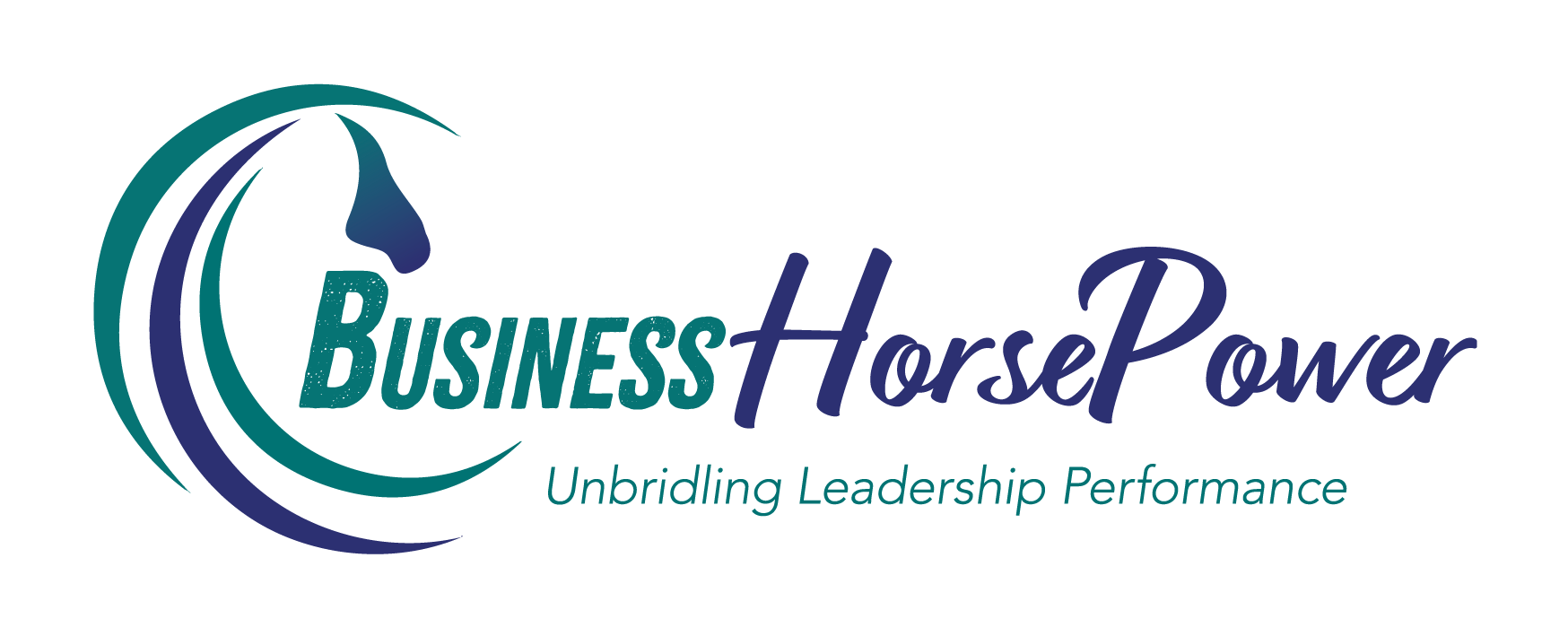
by Julia Felton | Jan 12, 2019
As a manager, you naturally want to do the right thing by your employees. But what if your well-intentioned efforts to promote engagement had the opposite effect? Sometimes, we think we’re making things better, when in reality we’re sowing the seeds for further disengagement, simply by not listening to the needs of our employees.
Here are three common ways employers incorrectly try to tackle disengagement – and three ways to rectify them.
1. Ticking boxes
One common mistake employers make is doing something just to tick the ‘training’ box on their end-of-year reports. They know they have to offer training of some kind, so they conduct a random session that might have no relevance to workers’ day-to-day jobs at all.
What you should do instead is train them in something that will benefit them professionally, and interest them personally. Dr Britt Andreatta states that training programs should arise from a partnership between employees and managers; you need to speak with them to work out what they need, and what they see in their future career path.
2. One-size-fits-all
One step better than ticking boxes – but by no means, a great model of employee engagement – is the one-size-fits-all approach. Here, an employer knows what the workplace issue is – maybe it’s that employees are having trouble communicating, managing complex projects, or understanding a thematic area of their work. So they organise training that broadly touches on this topic.
The problem here is that the broad training program does nothing to get into the specifics of the problem that the person, department or company is facing. The manager assumed that training employees in project management skills was enough to solve the problems, without realising:
- How much initial knowledge or experience employees have
- What goals the company wants to address
- How this will benefit everyone in the future
By considering a few critical questions before training, the employer can ensure what their staff learn will be relevant and useful – and ultimately, keep people engaged at work.
3. Using the wrong incentives
Companies often use salary increases to try to motivate their employees. They think that surely with an increase in take-home pay, their workers will be more engaged in their jobs, produce better outcomes and stick around for a longer time.
Salary is only part of the picture when it comes to employee engagement, according to a recent report from Aon Hewitt, 2017 Trends in Global Employee Engagement. While a competitive pay packet is important, employees respond more to intrinsic things than how much they earn. Respect, opportunity to learn and being included in decision-making process are much better ways of connecting employees to their jobs.
As an Engage & Grow Coach I’m committed to helping you engage your employees to create productive workforces and happy and satisfied workers. Please get in touch if you’d like some help engaging your team.
Julia Felton (aka The Business Wrangler) is the founder of Business HorsePower. Business leaders, entrepreneurs and executives hire her to accelerate their business performance by harnessing the energy of their people to work more collaboratively together. By aligning purpose with actions the team achieves exponential results as everyone starts pulling in the same direction.
Julia believes that business is a force for good and through designing purpose-driven businesses that leverage the laws of nature, and the herd, you can create businesses founded on the principles of connection, collaboration and community that make a significant impact in the world.

by Julia Felton | Dec 6, 2018
Yet again the most recent Gallup statistics paint a very dire picture of how low employee engagement levels are across the world. In the UK only 10% of employees are highly engaged which is marginally worse than the global average which is 15%.
Imagine what would happen if as business leaders we were able to double or even triple this. The impact on productivity, profitability and general levels of employee happiness would be demonstrable, and I bet a ripple effect would result in a better planet for all of us. You don’t get to be in the 100 Best Companies to Work For, for 19 years in a row, just by luck.
But how do we learn how to improve employee engagement and put people at the forefront of the business. A great solution is to learn from companies who have consistently been voted in the top 100 places to work. JM Family Enterprises is one of the largest, most innovative and diversified companies in the automotive industry. Based in Florida, its principal businesses focus on vehicle distribution and processing, finance and insurance, retail vehicle sales, and dealer technology services.
Stephanie Slate, Director of Talent Acquisition at JM Family Enterprises, shares one of the ways they create great levels of employee engagement is by referring to their people as Associates and not employees. This makes people feel that they work with the company and not for them. It instils a culture of inclusion and participation. (Personally, I hate the word employee as the word derives from the word employ, which means to use and to my mind this infers that we use our people, which simply is not right).
Secondly, she attributes the high associate engagement score to the fact that the company put People First. Everything the company does supports this culture including the recruitment process, where only people are hired who fit into the culture. Even if someone has amazing technical skills they will not be hired if they are a cultural misfit. This is a philosophy that both Zappos and Google also follow. In fact, they even encourage people to leave after 30 days by offering them a paycheck for doing so. This quickly weeds out anyone who has slipped through the recruitment process and does not align with the company culture.
Companies like JM family Enterprises, Zappos and Google take cultural fit so seriously that they will train Associates in the relevant skills needed for the job, as long as they have the right attitude and are a great cultural fit. After all the skills needed for different roles are changing at a rapid pace – think Facebook and Instagram didn’t even exist 15 years ago – yet the company culture is like its DNA and lives on long after different technological fads have been and gone.
Here are the six ways that you can create an engaged people-centric culture.
- Show Respect – make associates feel both valued and respected. Encourage the new associates to ask questions, to be curious, and they listen to them. With every new change that comes along, ensure that one of the first questions asked by senior management is “how will this impact our associates?’
- Demonstrate Caring – When a company cares about its associates it can show that by offering an excellent benefits package, but the caring can extend well beyond that. It could involve having medical staff and daycare services on-site; or providing support that helps associates in times of hardship. Some companies event have LifeCare Programmes, which is like an Associate concierge service that helps with non-work related issues.
- Communication and Connection – Communication is key to ensuring that your associates feel like they work with you and not for you. During the onboarding process, ensure all new Associates get to meet with a Vice President for a day, as well as meet and ask questions with the CEO. This not only helps the communication flow but also helps to make good connections between the new Associates and the Executive Management team.
- Encourage Empowerment – Encourage associates to ask questions and to challenge things, although this has to be done constructively and in ways that will benefit the company. Encourage associates to try new things and to learn from their mistakes, rather than to punish or criticize them for it. This helps to create an empowered workforce that is proactive when they see opportunities to benefit the company.
- Create Opportunities – One of the key reasons people cite for leaving their employers is a lack of career development and opportunities. When a company takes an approach where they hire for cultural fit and willing to train for a position, and they have five different divisions, there will always be opportunities to either advance or to try something different.
- Show Appreciation – Appreciation is one of our most basic human needs, after food, shelter, and safety, and JM Family do a great job at showing their Associates that they are appreciated. They have regular appreciation dinners and awards, and they also have a peer to peer appreciation program which allows people to recognize their colleagues for great work that they have done. Sometimes great work goes unseen by management, but programs like this allow for people to be recognized by their peers and for their efforts to be brought to the attention of the management.
Now for those of you thinking that creating an engaged workforce is a nice-to-do activity, think again. The results are compelling
- JM Family’s staff turnover rate is 7.1 per cent, which is well below their competitors, which helps to reduce cost, which increases profit.
- Their staff stays with the company 10.1 years on average, which compares very favourably with the national average of 4.2,
- Staff are happy to recommend the company, and the majority of new hires come from referrals which help to keep down recruitment costs and ensures that any open positions are filled quickly.
- The company has achieved record revenues in each of the last five years, with an average revenue growth of around 12 per cent per year since 2011.
So the result is when you put your people first you create an engaged, excited and empowered workforce, which helps to keep costs down and revenues growing, and who wouldn’t want that.
If you want to get more engagement in your team why not grab a copy of our new online training course. For a limited time, you can get free access using the COUPON CODE JF2 at check out. Simply register at https://www.engageandgrow.com.au/video-course
Julia Felton (aka The Business Wrangler) is the founder of Business HorsePower. Business leaders, entrepreneurs and executives hire her to accelerate their business performance by harnessing the energy of their people to work more collaboratively together. By aligning purpose with actions the team achieves exponential results as everyone starts pulling in the same direction.
Julia believes that business is a force for good and through designing purpose-driven businesses that leverage the laws of nature, and the herd, you can create businesses founded on the principles of connection, collaboration and community that make a significant impact in the world.

by Julia Felton | Nov 27, 2018
No leader sets out to lead an ineffective team. In fact, many leaders invest a lot of time and energy agonising over how to create the perfect high-performance team that works effectively together and consistently delivers results.
However, there is a problem as many of the strategies leaders have adopted to improve teamwork, while well-intentioned, are not all that effective. Thompson, a professor of management and organisations at Kellogg and an expert on teamwork, clears up five popular misconceptions. In the process, she offers a roadmap for building and maintaining teams that are creative, efficient, and high-impact.
1. Get The Chemistry Right
Many leaders create teams that lack diversity and are too large. It’s human nature to hire people just like us but that just creates a team of clones and doesn’t help the team leverage the myriad of different skill sets that are out there. Plus when the team is too large it can become difficult to build trusting relationships with your peers.
Teams need to have great chemistry between the individuals. A team flourishes when each team members implicitly understand each other and everyone is clear on the role they play. Just think of a soccer team. The greatest players in the world don’t have to look up before they pass the ball. They just know where their team members will be. This certainty that your team members have your back creates a safe and comfortable environment in which to function.
2. Create The Right Rules of Engagement For The Team
A challenge for leaders when building teams is how to manage the rules of engagement. The best rules of engagement identify the goal of the team, establish the rules of operation, and define where responsibilities lie. However many leaders struggle with the dilemma of how to define these rules. Do we have no team rules so that the team can be agile, flexible and have autonomy or do we impose a set of rules and risk quashing creativity and innovation? One of the challenges with the former approach is that no-one steps up to the plate as everyone is waiting for someone else to take action which can create paralysis and so has exactly the opposite effect to that desired.
Thompson discovered that teams that developed some rules of engagement ended up being more nimble, having more proactive behaviour, and achieving their goals more than teams that didn’t bother. Plus, the process of developing the rules of engagement can improve team cohesion and effectiveness.
3. Create Trust And Be Vulnerable
In his book The Five Dysfunctions of a Team, Patrick Lencioni states that lack of trust is the number one reason why teams fail. So how do you build trust? By being vulnerable and sharing heartfelt stories about yourself and your experiences. This enables team members to connect emotionally to each other and is a rapid way of building trust.
As Thompson noted: “It’s somewhat unintuitive that putting out our worst moment in the last six months can actually help our team. Almost all of our intuitions are wrong.”
4. Stop Wasting Time In Meetings
Whilst meetings are a useful vehicle in the workplace to rapidly share information with a number of people, many meetings are poorly structured and rarely achieve the outcomes they were designed to achieve. Why? Because most meetings are designed to generate ideas rather than evaluate and expand on ideas.
Roughly 25% of your team is great at generating ideas, so encourage brainstorming prior to the meeting and get all the ideas on the table, then during the meetings simply focus on sifting through the ideas and enhancing and developing them.
Also, meetings tend to fill all the available time, so focus on having shorter meetings with agreed outcomes. Often four 30 minute meetings can be more effective than one two hour meeting.
5. Encourage Team Members To Challenge Each Other
Great teams challenge each other and this fuels their creativity and innovation. However, for this challenge to be productive each team member needs to feel that they have a voice and can be heard without any fear of the consequences. When this type of trust and culture exists then the team can become high performing.
If you want to get more engagement in your team why not grab a copy of our new online training course. For a limited time you can get free access using the COUPON CODE JF2 at check out. Simply register at https://www.engageandgrow.com.au/video-course
Julia Felton (aka The Business Wrangler) is the founder of Business HorsePower. Business leaders, entrepreneurs and executives hire her to accelerate their business performance by harnessing the energy of their people to work more collaboratively together. By aligning purpose with actions the team achieves exponential results as everyone starts pulling in the same direction.
Julia believes that business is a force for good and through designing purpose-driven businesses that leverage the laws of nature, and the herd, you can create businesses founded on the principles of connection, collaboration and community that make a significant impact in the world.

by Julia Felton | Nov 12, 2018
Small and medium-sized businesses are the life-blood of our economy, but they face specific, ever-increasing challenges. The world is in the mists of an employee engagement crisis, with serious and potentially lasting repercussions for the global economy.
Without a doubt, one of the greatest challenges SME’s currently face is the attraction and retention of talent. Intelligent, honest, hard working staff are critical to an organisation’s ongoing success, but now more than ever, good people are hard to find – and they are even harder to hold on to! To ensure employee job fulfilment, loyalty and maximum ROI, the key ingredient that is so often missing is Engagement.
In a recent Gallup poll, it was revealed that only 13% of the world’s employees are engaged at work, and most disengaged employees would change employers right now for as little as a 5% pay increase.
- The Engaged Employee – Does more than is expected. Works with a passion and feels a profound connection to the organisation they work for. They drive innovation and move the organisation forwards, providing maximum return on salary investment
- The Disengaged Employee – Does just what’s expected. Is essentially there in body only. They’re sleep walking through their day. Marking time, but not energy or passion, into their work. They provide minimum return on salary investment
- The Actively Disengaged Employee – Does less than expected. They aren’t happy at work; they’re busy acting out their unhappiness. Every day these workers undermine the efforts of their engaged co-workers, often providing negative return on salary investment.
Many organisations believe that strong leadership, and an exclusive focus on the development of their leaders is the key to a winning culture. They are mistaken. Leadership is not the heart of your organisation. The heart of your organisation is its people and their contribution. Without actively engaged employees, the leadership message cannot be heard..
Trained leaders today have been overloaded with leadership knowledge and theory, but too often they are not sufficiently activated. We need to turn our attention equally to our staff, getting them actively engaged regularly through new, innovative and inclusive methods, thus creating shared vision and buy in. It’s called ‘leadership living’ and all levels of the organisation participate together in the workplace. It is an all action methodology, which means all team members will live, breathe and grow together as a united force. It breeds true engagement, uncovers more leaders and builds a powerful and united culture. To ensure maximum impact and lasting change, everyone needs to be involved and everyone needs to be accountable.
So how do we engage our staff, encouraging maximum productivity, loyalty and ROI? It starts with changing habits as a collective, creating a movement. It’s about working as a unified team to change everyone’s individual and collective behaviours. The only way you can do this is through structured, strategic and regular discussions built on shared ownership, individual empowerment, and regular feedback sessions.
Also, traditional hierarchy has to go. The traditional organisational structure is not the most efficient option for businesses in the 21st century. Instead, successful companies are moving to an organisational structure that allows employees to make more of their own decisions and avoid the rigidity of traditional models. Generations X, Y and Z respond and are motivated differently to Baby Boomers. Equality creates unity, and unity will bring the truth out in your organisation. Think of truth as the splinters that need to be removed from your business. It may hurt, but we need to hear it, otherwise the pain will continue and exacerbate. We need to create an atmosphere for the truth to be tabled discussed and addressed without judgement.
If you want to get more engagement in your team why not grab a copy of our new online training course. For a limited time you can get free access using the COUPON CODE JF2 at check out. Simply register at https://www.engageandgrow.com.au/video-course
Julia Felton (aka The Business Wrangler) is the founder of Business HorsePower. Business leaders, entrepreneurs and executives hire her to accelerate their business performance by harnessing the energy of their people to work more collaboratively together. By aligning purpose with actions the team achieves exponential results as everyone starts pulling in the same direction.
Julia believes that business is a force for good and through designing purpose-driven businesses that leverage the laws of nature, and the herd, you can create businesses founded on the principles of connection, collaboration and community that make a significant impact in the world.

by Julia Felton | Oct 27, 2018
No-one doubts that we live in a world that is moving at lightning pace. In fact, the speed of change has never been faster. As a result, the most common theme I keep hearing my clients and colleagues say, is there are not enough hours in the day. How can I get everything done?. I need to learn to manage my time better. I need to become more productive.
Yet ironically none of us can learn to manage time. As a leader, you all have 24 hours in a day – 1,440 minutes. This is a constant which is never going to change.
What you can do however is manage your energy. Energy is the amount of effort we expend into doing something. Approach a task with high levels of energy and you can often get the task completed with superhuman speed. Approach the same task with lacklustre energy and it seems to take forever. I’m sure you can all think of a situation where this has happened for you.
So here are my five tips for managing your energy levels so that you can become as productive as possible each and every day, and so get more done in less time.
- Minimise the Number of Decisions You Have To Make Daily
Did you know that we make over 10,000 trivial decisions every day and that our decision-making ability decreases throughout the day? Therefore the smart thing to do is to focus your energy on the business critical decisions you need to make every day and minimize the number of inconsequential decisions you make. A simple activity like having a “uniform” for work can stop you wasting time on thinking about what to wear each morning. It’s no surprise that Steve Jobs wore his trademark black turtleneck and jeans, or former US President Barak Obama only wore blue or grey suits.
- Block and Tackle Your Schedule
To be more effective make sure you schedule everything in your diary. I mean everything. This means that you don’t have to wake up each morning wondering what to do, that’s already done. You know what time you have meetings, what times you are working on sales and marketing etc. Better still cluster similar activities together and plan your week so you have specific days for different tasks. At Entrepreneurs Institute Mondays is the finance day when everyone has to report on their weekly metrics and Wednesday is a creative day when people work on new projects and ideas.
- Avoid Task Switching
Nothing wastes more time and energy than multi-tasking. Start one task and stick with it for an allocated time without interruptions. That means no answering the phone, emails or jumping on social media. A study by Google revealed that when you switch tasks it takes you 20 mins to get back to the state you were in before you engaged in the interruption. That is all wasted time, as well as energy as you seek to get back into the inspired state you were previously in.
- Focus on Activities That You Enjoy
You naturally have more energy and enthusiasm for a task when you really enjoy it. So set up your team so that you have people available to work on the tasks that you least enjoy, as these will be the ones that deplete your energy. So often you are told to develop your weaknesses but I really believe that if we can focus on what we love then we will get more done.
- Eat Good Quality, Healthy Foods
You need to fuel your body with healthy foods if you are to maximise your energy levels. How about starting each day with a healthy green juice and maybe a brisk walk or some yoga stretches. This will release endorphins that will help boost your momentum for the day.
So next time you take on a task think about what the ROEE, return on energy employed is. Does the task inspire and motivate you or will it leave you feeling depleted and exhausted?. After all, you only have so much energy so use it wisely.
Julia Felton (aka The Business Wrangler) is the founder of Business HorsePower. Business leaders, entrepreneurs and executives hire her to accelerate their business performance by harnessing the energy of their people to work more collaboratively together. By aligning purpose with actions the team achieves exponential results as everyone starts pulling in the same direction.
Julia believes that business is a force for good and through designing purpose-driven businesses that leverage the laws of nature, and the herd, you can create businesses founded on the principles of connection, collaboration and community that make a significant impact in the world.

by Julia Felton | Sep 19, 2018
As a business owner of a growing enterprise the only way that you can sustain growth and your sanity is by leveraging the power of team. However creating a high performance team is not always plain sailing, even when you have the best support in the business.
The challenge is that many teams are made up of individuals who have different agendas and may not always have the right experience to support the owner in growing the business.
Research by UK accountant Haines Watt discovered that almost one in five senior managers (17%) are actively aware that they have a divergent vision of the business’s future to that of the owner. At the same time, over half (53%) of management teams and business partners are growing a business for the first time.
With so many senior managers working to their own agendas, combined with a lack of experience, business owners can’t be blamed for lacking trust in their teams..
In his book The Five Dysfunctions of a Team Patrick Lencioni identifies that lack of trust is the foundational cornerstone that prevents the success of a high performing team.
However trust is not the ability of team members to predict another’s behaviour because they have known each other for a long time. Rather, when it comes to teams, trust is all about vulnerability. It’s about being comfortable and open, even exposed to one another’s failures, weaknesses and fears.
Vulnerability-based trust is predicated on the simple concept that people who aren’t afraid to admit the truth about themselves are not going to engage in office politics and antics that waste everyone’s time and energy, and more importantly make the accomplishment of results highly unlikely.
However, the irony of this research is that 52% of business owners find they can’t be open and honest, masking their concerns from their teams because they are worried about exposing vulnerability. And as you know leadership starts at the top, so if the business owner is not modelling the way, displaying vulnerability-based trust then it is hardly surprising the rest of the team aren’t adopting this behaviour.
Unsurprisingly, across the board this lack of trust, honesty and communication leaves management teams siloed, uninformed and impeded from stepping up and taking more of the day to day running of the business away from the business owners. As a result, owners have less time to plan and think strategically, which in turn prevents them from reaching their growth ambitions.
The creates a vicious cycle where the business owner is stuck working in the business rather than on it and consequently often becomes exhausted as they have not mastered how to leverage their time, talent and team to help enable the change they desire.
If you’d like to learn how to leverage your time, team and talent so that you can create a more purposeful, profitable business then please book in for a complimentary consultation where you are guaranteed to walk away with at least one great idea to help you accelerate your business growth.
Julia Felton (aka The Business Wrangler) is the founder of Business HorsePower. Business leaders, entrepreneurs and executives hire her to accelerate their business performance by harnessing the energy of their people to work more collaboratively together. By aligning purpose with actions the team achieves exponential results as everyone starts pulling in the same direction.
Julia believes that business is a force for good and through designing purpose-driven businesses that leverage the laws of nature, and the herd, you can create businesses founded on the principles of connection, collaboration and community that make a significant impact in the world.

by Julia Felton | Sep 12, 2018
A recent study by accountants Haines Watt reveals that finding and creating a management team that are fully aligned with the business owners vision and purpose can be really challenging. Often it seems that creating such a team is far out of reach. There are two main reasons why your management team might not be aligned.
- you don’t have the right people at the management table,
- lack of clarity of the business purpose and mission caused by a lack of planning, or strategic focus.
The fact is, UK business owners are not spending enough time on their business, rather they are spending a vast majority of their time in the business. This focus on the day-to-day is preventing business owners from planning effectively. And here’s the rub. Failing to plan is planning to fail.
A properly formed strategic plan can ensure businesses grow faster and more sustainably. In fact, our study validated that business owners who are able to step back and focus predominantly on strategic planning are twice as likely to run fast growth businesses.
Developing a fully formed, strategic plan ultimately frees up more time to drive towards a common purpose and innovate along the way. Unfortunately, UK business owners are holding too tightly to the everyday functions of their companies, reluctant to let the management teams, who should be at the heart of the company, take their rightful place.
The theoretical role of the management team is a far cry from reality. The study found that nearly half of business owners are not confident that their business could survive beyond a single week if their team were left to run it. Wow, what a revelation and a telling sign of how little trust business owners put in their team. Imagine too the stress that creates for you, the business owner, when you feel that you are single handedly shouldering the responsibility for the business.
One of the most telling findings in the research was a widespread fear of exposing vulnerability, with business owners refusing to open up to their management team regarding their concerns or future plans. Without enough communication, the result is siloed working, leading to, and exacerbating, a lack of coordination within the team.While the causes of disunity can vary, the result remains the same – stagnated business growth. It is imperative that business owners make the time to identify the aspirations they hold for the business they’ve built. Once identified they can strategically look towards the future and place their management team at the centre of that vision.
If you’d like to get clarity on your purpose then let’s schedule a chat, because without a clear purpose your business will just drift along and never achieve its full potential and you will be unable to leverage the full potential of your team.
Julia Felton (aka The Business Wrangler) is the founder of Business HorsePower. Business leaders, entrepreneurs and executives hire her to accelerate their business performance by harnessing the energy of their people to work more collaboratively together. By aligning purpose with actions the team achieves exponential results as everyone starts pulling in the same direction.
Julia believes that business is a force for good and through designing purpose-driven businesses that leverage the laws of nature, and the herd, you can create businesses founded on the principles of connection, collaboration and community that make a significant impact in the world.

by Julia Felton | Sep 3, 2018
We often don’t think of the fact that great leaders must become great organisational gardeners, but it’s the reality. As a leader your role is to cultivate and nurture the people in your business so they can provide the best service to your clients. You need to take decisive action when required and continually tend to the business to ensure it stays on track. And this is just what great gardeners also do.
So if you think of your business as a garden, what are the six key activities that you must engage in to achieve a beautiful outcome?
- Create The Optimal Environment – as a leader you set the tone and culture of the business and this needs to be optimal to achieve the business goals. Plant the wrong plants in the wrong soil and they will never survive, as I discovered to my peril when I planted some azaleas in my clay-based garden. I loved the azaleas and assumed they would grow and thrive but the conditions just weren’t conducive for them to survive. Likewise, if you want your team members to thrive you have to plant them in the right environment. The best team members can fail in the wrong environment so as a leader you need to cultivate the right culture for business success.
- Plant the Right Seeds in The Right Place At The Right Time – one of the mots important roles you have as a leader is to in the words of Jim Collins “get the right people in the right seats on the bus”. Identify the right talent that will thrive in your business culture and then discover their strengths and how they will be able to contribute to the organisations success. Plant the wrong people in the wrong roles and all sorts of chaos can ensue especially when there is no clarity of who is responsible for what. Silo mentality can mean that there is disharmony as rather than working together all the people (plants) vie for the limited resources.
- Be Patient and Nurture – just like plants in your garden team members need nurturing and supporting. Let them have their space to grow and develop. Don’t crowd them and micro-manage them but rather empower them to get the job done. If things don’t go to plan, don’t fire the members, bur rather help them learn from their mistakes. Just like you can gently re-direct plants help team members to see the error of their ways and what they can do differently. Finally, remember it takes time for a seed to grow into a flower so make sure you don’t dig up the seeds before they have had time to get established. Oftentimes I see business owners doing just this with new products. Like the seeds, new products take time to get established in the marketplace so give them the time to get traction before you cull them.
- Water Regularly – plants can’t survive without water and organisations can’t survive without clear communication. As a leader you need to water your team members every day making sure they are continually appraised of what is happening. It is very important to over communicate during times of change particularly when the results are not immediate and people might be unaware of what is happening. Just like if you fail to water your plants they often die, so it is with your team members. When they feel excluded and disconnected from the purpose of the company they lose motivation and morale dwindles making them unhappy. Although team members obviously don’t physically die they can emotionally die inside as they lose their passion for their job.
- Weed Immediately – gardeners know that despite their best efforts weeds will always appear. I actually think this is the sign of a great garden, as it means that other opportunities can exist alongside what was planned. The challenge occurs when these weeds start disturbing the harmony of the flower bed. They start becoming a distraction that takes away from what everyone else is doing. In business the weeds can show up as toxic team members who start sabotaging the success of the business by diverting resources for their own agenda. In these instances a leader needs to take decisive action to stop these often silo mentality people damaging the engagement in the rest of the team.
- Know When To Prune – great gardeners know just the right time of year to prune their plants in order to get maximum growth from them. Some plants need to be cut back hard whilst others just need a light touch. Leaders however are not so good at pruning their businesses and releasing unprofitable products, systems and mindsets that just don’t serve them any longer. And yet trees know that if they are to continue to grow they need to start diverting water from lower branches so that the branches at the top of the tree can flourish. What pruning do you need to undertake in your business so that you can continue to adapt and innovative to respond to the changing market conditions?
The other thing to consider is that the gardening activities might vary depending on the season that the business is in. For example, when the business is in start up mode and just beginning to grow there will be more focus on creating the right environment (culture) and planting the right people in right roles.
As the business grows and expands the activities might move onto how to stay focused and avoid becoming overwhelmed by all the weeds (new ideas and opportunities) that could appear and distract you from your vision and purpose.
Finally, as the business matures the focus shifts to considering what products and services need to be pruned so that new opportunities can sprout to continue the growth cycle of the business.
So I’m curious what gardening lessons have you experienced from running your business?. I’d love to hear about them.
Julia Felton (aka The Business Wrangler) is the founder of Business HorsePower. Business leaders, entrepreneurs and executives hire her to accelerate their business performance by harnessing the energy of their people to work more collaboratively together. By aligning purpose with actions the team achieves exponential results as everyone starts pulling in the same direction.
Julia believes that business is a force for good and through designing purpose-driven businesses that leverage the laws of nature, and the herd, you can create businesses founded on the principles of connection, collaboration and community that make a significant impact in the world.

by Julia Felton | Aug 15, 2018
The bi-ennial Farnborough Airshow is one of the largest aerospace shows in the world. During the 2016 show USD124 billion of orders and commitments were placed, so this is clearly a big deal for the aerospace industry and a time during the year when they make considerable sales that drive their revenue and profits.
For the 1,500 exhibitors creating a great experience for their potential prospects is paramount if they are to secure the business, which is why so many of the major suppliers like Boeing and Lockheed Martin invest tens of thousands of pounds in corporate hospitality.
Why do they do this? A unique corporate hospitality suite enables the company to wine and dine their prospects in a luxurious environment. It provides a sanctuary for meetings away from the hustle and bustle of the show where trust and rapport can be built up. The environment relaxes the prospect and so hopefully makes them more inclined to buy.
But the aerospace company can only do so much. A key partner in their success during the show are the hospitality companies that provide catering for them during the event. If the catering company doesn’t perform, it reflects on the company, and poor service and/or a bad experience could result in the company losing the potential order.
So it was with some trepidation that I agreed to run the corporate hospitality chalet for one of the major players. Our three-story chalet stood on a prize spot on the airfield with a magnificent view of all the aircraft landing and taking off for their demonstrations. We had two restaurants in the chalet, along with a bar and an external viewing platform.
My challenge was how to develop a high performance team from 24 individuals who had not met each other before and had never worked at this venue before. And I had to do this all within 24 hours. We often read that it takes many months to create a high performance team and maybe that is true if the team has to work together day in, day out for many months. Here rather I needed to establish a high performance team within 24 hours that could provide exemplary service for six days and then be disbanded – probably never to work together again.
These are the 7 lessons I learned in creating that team:
1) Share The Leadership
Within our chalet we split the leadership down between three of us. The chef took responsibility for the kitchen area, and myself and a colleague, Sarah, took a restaurant each, so effectively each of us was responsible for a floor of the unit. This also meant that each of us was managing a small team of between 8-10 people
2) Clearly Define Job Roles
Each of us took responsibility for certain roles within the chalet. The chef took responsibility for all food delivery and ordering food supplies. Sarah looked after breakfast service, the a la carte lunch service and afternoon champagne and canapé service. I took responsibility for the bistro buffet and bar and the conference rooms. Then within each team we allocated different roles to different team members. The key here was quickly identifying the skill set of the team members, as well as asking them what they wanted to do, and then making a judgement on the best role they could perform in the team.
3) Explain the Purpose of The Role
Since all of my team members were millennials I knew I needed to provide some context and purpose for them on what we were doing and why. Spending time helping them understand more about the air show and the massive importance that this event had to the client was instrumental in getting their buy in. After all as I reasoned with them, people buy with emotions and then justify with logic, so if we could help create an amazing experience for our clients prospects there was a great chance they would buy which in turn would make our client very happy
4) Pay Attention
Observing and paying attention to what my team were doing was a key role of mine as well as providing them with continual feedback on how they were doing. Once the team members knew I was noticing and caring about how they performed, they pushed themselves harder to improve even more.
5) Say Thank You
Keeping team members feeling appreciated for what they were doing was key because being fairly recognised for great performance makes it worth the effort. Typically this was just acknowledging a job well done, especially when given the sweltering weather conditions some of the activities had to take place in sauna like conditions. With many of the days stretching into 14 hours keeping morale up by being appreciative was critical.
6) Keep Asking For Feedback and Suggestions
Never assume you have all the answers. Daily check-ins with the team where we evaluated what we had done well the previous day and what we could do better yielded great ideas, many of which we were able to implement immediately. The result was that the team members felt they were contributing and able to influence events, whilst for the client it ensured they got even better service.
7) Model The Way – Lose the Ego
Demonstrate the standards you expect by the way you behave. Sometimes that meant I was washing up and taking out trash. When team members see that you don’t see an activity is above you, it immediately brings them on side and more likely to engage in that less than desirable task.
In part due to the great service and support that the team provided our client for the air show had a bumper year of sales and was delighted with the experience we created for them. Our success came from truly understanding that each of us had a role to play and that all of our roles synergistically worked together to create the whole. Everyone’s success was interdependent on someone else – just like in nature – and so when we all aligned with the same focus then amazing results were achieved in a really short period of time.
So are you using these high performance strategies in your business?. Even if you don’t employ team members you can use these strategies to engage your suppliers and customers.
Julia Felton (aka The Business Wrangler) is the founder of Business HorsePower. Business leaders, entrepreneurs and executives hire her to accelerate their business performance by harnessing the energy of their people to work more collaboratively together. By aligning purpose with actions the team achieves exponential results as everyone starts pulling in the same direction.
Julia believes that business is a force for good and through designing purpose-driven businesses that leverage the laws of nature, and the herd, you can create businesses founded on the principles of connection, collaboration and community that make a significant impact in the world.

by Julia Felton | Aug 4, 2018
The summer months can signal the death knell for a business unless managed properly. As leaders and business owners, we all know that it is important for us and our team members to have balanced life; but have you ever stopped to consider how the summer months can literally kill the momentum in your business?
Think about an aircraft. It uses a large proportion of its fuel to simply get off the ground. Once airborne, only a tiny amount of energy is then required to keep it flying. And it’s the same in your business, too.
Projects take time, energy and resources to get going, and then when you think everything is going swimmingly, summer kicks in — and unless managed carefully, the momentum can be lost.
It’s a bit like the plane crashing en-route to its destination. The results can be devastating because, not only is productivity lost during these summer months, but the impact lasts into the third quarter of the year — meaning that close to six months of the year can be impacted by the loss of momentum during the summer.
If you don’t believe me, then let’s look at the research by American Express that reveals during the summer months there is:
- 20% decline in workplace productivity
- 19% drop in employee attendance
- 13% increase in the time it takes to complete projects
- 2.6 times increase in the time taken for lunch
And if that wasn’t bad enough, the research also revealed that there is a:
- 200% increase in shopping during work hours
- 120% increase in employees searching for another job
Which is why the summer months can have such a negative impact on overall business performance, unless managed appropriately.
Here are five things leaders can do to help maintain momentum during the summer months
1. Schedule Employee Vacation In Advance
Make sure you get everyone’s vacation days planned in advance. This way you can best minimize the impact on the business, and you will have clarity on what is happening. Plus, team members can support each other in managing workloads prior to going on their vacation.
2. Insist Employees Unplug When They Are on Vacation
It is essential that team members take vacation so they can recharge, and in today’s world it is important to ensure that your team members really do dis-connect and unplug from the business. Way too many people go on vacation but stay connected to the office by technology, meaning they never really switch off. To operate at high performance, employees need to rest and relax so they can replenish their energy sources. Ensure team members put out-of-office notifications on their emails so they don’t feel compelled to respond to email whilst they are away.
3. Create Focus By Having Clearly Defined Projects/Activities
Focus gives team members clarity and certainty, so make sure that the team has some fun goals to achieve over the summer. Maybe even consider setting some challenges for the team to keep them engaged, and give out prizes or incentives for those team members who complete the challenges.
4. Be Flexible With The Hours Worked
As a leader, we all know that it is not the hours worked that is important but rather the outputs delivered. Allowing team members to leave early, once certain milestones are met, will help keep the team focused and working at a high level. It will also encourage cooperation as the team pulls together to achieve the objectives, and everyone wins.
5. Model The Way
As a leader, your team looks to you to create a positive example for them. So model the way and set yourself higher goals for the summer. It’s often easier to get meetings during the summer because others are in the mentality of slowing down, so leverage this to your best advantage. Arrange meetings, attend events, and stay positive. Your team will see your drive and excitement and feed off this, thereby maintaining their own personal momentum.
Implement these five strategies if you want your business to grow over the summer; and remember, your momentum becomes your team’s momentum. So lead your team towards a productive summer.
Julia Felton (aka The Business Wrangler) is the founder of Business HorsePower. Business leaders, entrepreneurs and executives hire her to accelerate their business performance by harnessing the energy of their people to work more collaboratively together. By aligning purpose with actions the team achieves exponential results as everyone starts pulling in the same direction.
Julia believes that business is a force for good and through designing purpose-driven businesses that leverage the laws of nature, and the herd, you can create businesses founded on the principles of connection, collaboration and community that make a significant impact in the world.
















